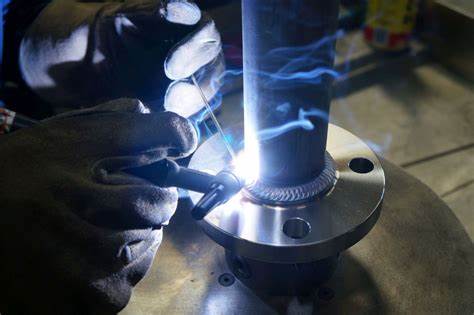IG welding, while commonly associated with thin metals, offers a wide range of applications suitable for both hobbyists and professionals. AC/DC welders, in particular, provide versatility and are essential tools for various tasks in home projects and automotive repairs, making them indispensable for DIY enthusiasts.
What is an AC/DC welder and why should I use one?
Welding Town
Where is aluminum welding used?
Mastering the skill of aluminum welding is highly valuable and opens up a wide range of career opportunities in the welding industry. Aluminum is an alloy that is composed of various metals such as silicon, magnesium, and zinc, each contributing to its distinct mechanical properties. These properties are classified using numerical codes like 3xx, 4xx, 7xx, and so on.
Aluminum welding finds extensive use in industries such as aerospace, infrastructure, marine, industrial, automotive, and construction. It plays a vital role in these sectors and is an integral part of our civilization. By acquiring the ability to weld aluminum, you gain access to a world of career possibilities and can contribute to significant projects and developments.
In the aerospace industry, aluminum welding is crucial for manufacturing aircraft components, ensuring their structural integrity and reliability. In infrastructure projects, aluminum welding is utilized in the construction of bridges, buildings, and other architectural structures that require lightweight and durable materials. In the marine industry, aluminum welding is employed in the fabrication of boats, ships, and offshore structures due to its corrosion resistance and strength-to-weight ratio. Industrial applications involve the use of aluminum welding for manufacturing equipment, machinery, and various components. In the automotive sector, aluminum welding is essential for producing lightweight vehicle parts, improving fuel efficiency and performance. Lastly, in the construction industry, aluminum welding plays a significant role in the fabrication of aluminum structures used in various projects.
By acquiring the skill of aluminum welding, you position yourself to contribute to these industries and be part of projects that shape our modern world. The demand for skilled aluminum welders is consistently high, and mastering this specialized skill can lead to rewarding and diverse career opportunities.
How to TIG weld aluminum
Welding aluminum alloys can present several challenges due to their unique properties. Aluminum disperses heat quickly, making it prone to workpiece distortion if the torch is held in one spot for too long. It is also susceptible to “blow through” where the metal melts away under an excessively powerful arc. Oxidization, where the surface layer of the aluminum melts into the weld pool, can occur if the heat is not properly controlled. These factors contribute to aluminum’s reputation for being tricky to weld.
To achieve the right balance, precise control over the foot pedal, electrode, and filler rod is essential when welding aluminum. Before starting the welding process, thorough cleaning of the aluminum surface is crucial to avoid contamination and oxidation. Use a wire brush to scrub the workpiece and degrease it if necessary.
When welding aluminum, alternating current (AC) is generally preferred as it provides less intense heat, which is better suited for delicate metals. However, the finish may appear slightly rough, further contributing to aluminum’s reputation for being challenging. A high-frequency (contactless) start is recommended for the welding process. Argon is commonly used as the shielding gas for TIG welding aluminum. Unlike other materials, when welding aluminum, a slightly rounded tip on the tungsten electrode tends to work best. In the past, this rounding had to be done manually, but modern welders with IGBT inverters eliminate this requirement. When welding aluminum with alternating current, the typical range for the A/C balance is 25-35. At this level, the tungsten electrode naturally forms a slight ball shape, providing both accuracy and a stable arc cone.
Practicing with the right equipment is crucial to learning how to weld aluminum effectively. In addition to a suitable welding machine, the choice of accessories depends on the specific aluminum alloy being welded. For example, the TIG filler rod should be matched to the grade of aluminum being worked on. It’s also important to consider the thickness of the aluminum and choose a filler rod accordingly.
By understanding and practicing these techniques, along with using appropriate equipment and accessories, you can gradually develop the necessary skills to weld aluminum successfully. Remember, practice and perseverance are key to mastering the art of welding aluminum.




![12 Different Types of Welding Processes [The Definitive Guide] 6 12 Different Types of Welding Processes [The Definitive Guide]](https://www.021208.com/wp-content/uploads/2025/01/12-Different-Types-of-Welding-Processes-The-Definitive-Guide-150x150.jpg)







